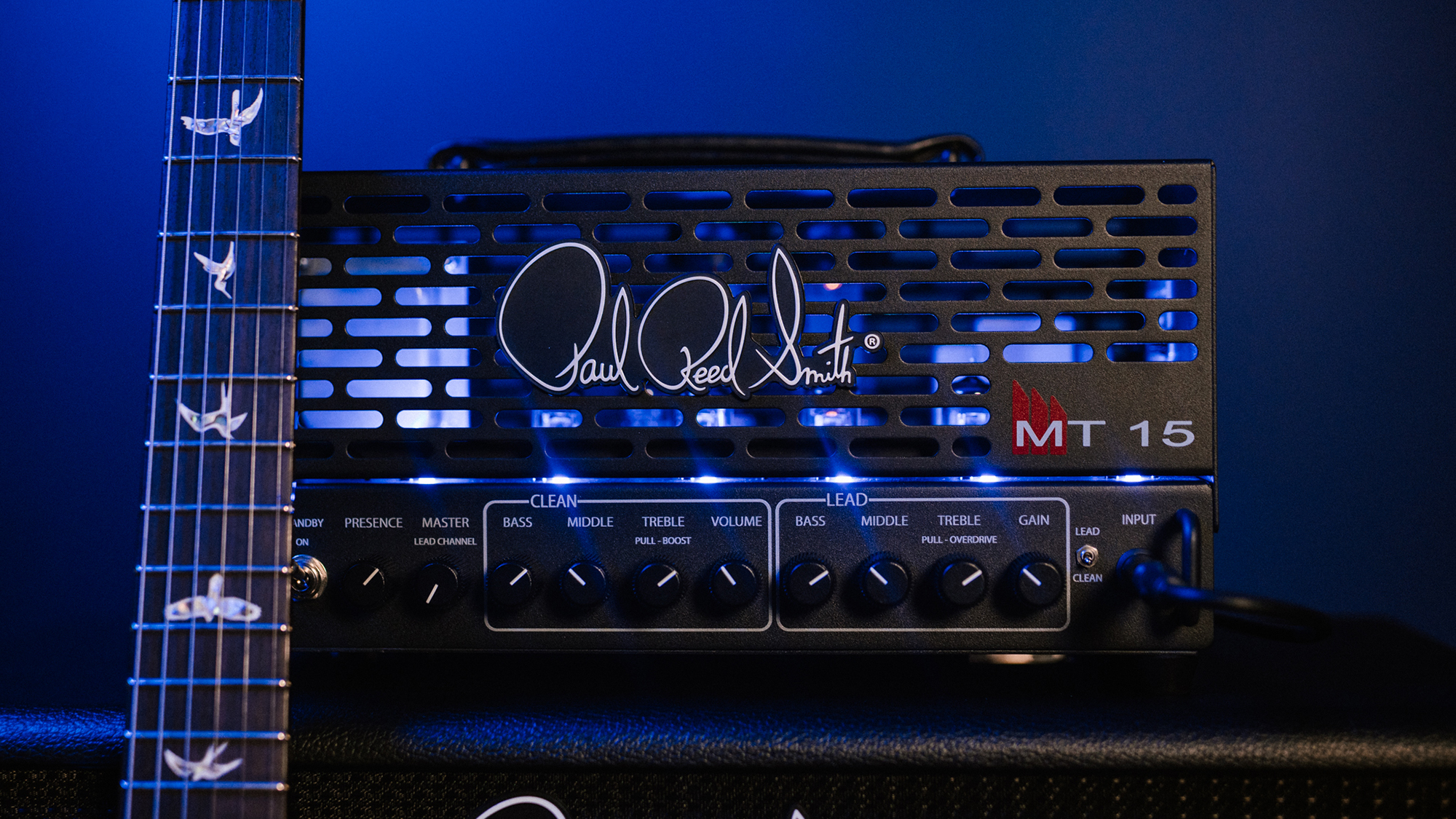Learn how to target chord tones when soloing over a chord progression
Andy Timmons teaches you horizontal single-string ideas to make your lead playing melodically compelling
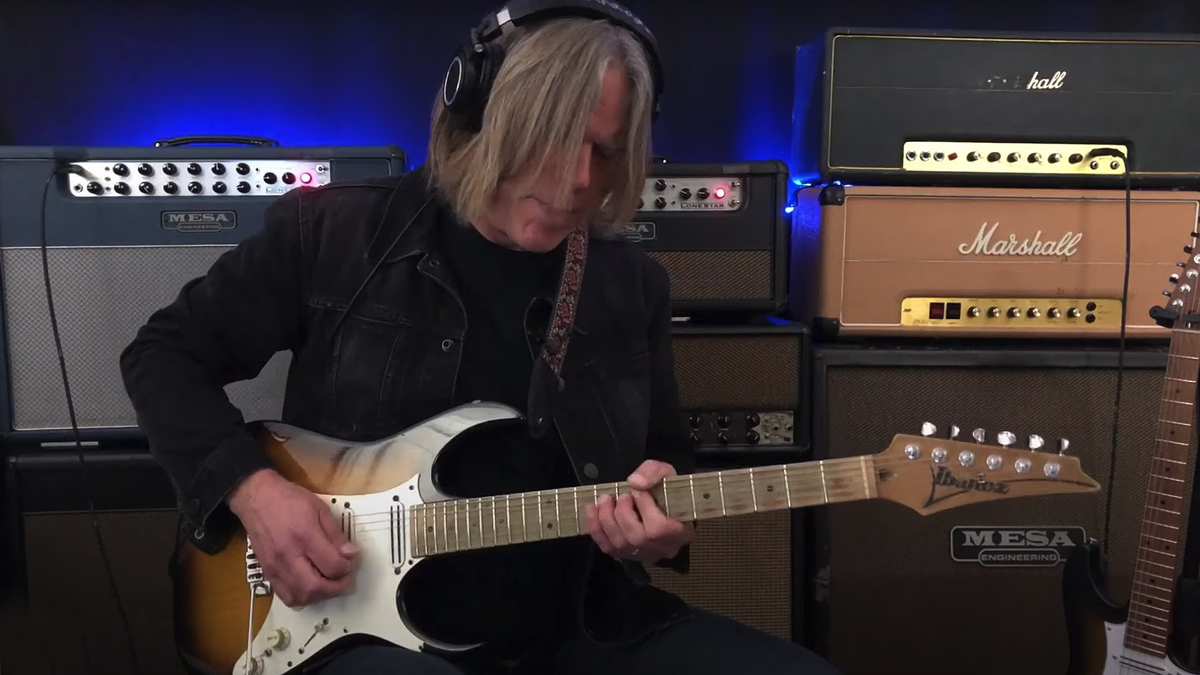
One of my favorite techniques to use when soloing is to weave melodic lines while traversing the fretboard on a single string. Some of my favorite players, from Jimi Hendrix to Steve Vai, use this approach to great effect.
Guitar players will often refer to moving up and down the board in this way as horizontal playing, as the lines are formed by the horizontal movement of the fret hand. By contrast, when one moves across multiple strings while remaining in one position, this is often referred to as vertical playing, also known as position playing. Last month, I introduced a chord progression to solo over: Am - G - F - E7.
When playing over these chords, I demonstrated improvised lines based on the A natural minor scale (A, B, C, D, E, F, G), also known as the A Aeolian mode. As you recall, there’s a slight twist when we get to the E7 chord, as the minor, or “flatted,” 7th of A natural minor, G, is momentarily replaced by the major 7th G#, which is the major 3rd of E7 (E, G#, B, D) and provides a clear indication of the transition in the progression.
A key factor in my soloing approach is to always be aware of the triadic chord tones – the root, 3rd and 5th – inherent in each chord in the progression, as well as the extended tones for each chord, such as the 9th, 11th and 13th, or their altered counterparts, such as b9, #11 and b13. But it’s best to start with the foundational triadic tones.
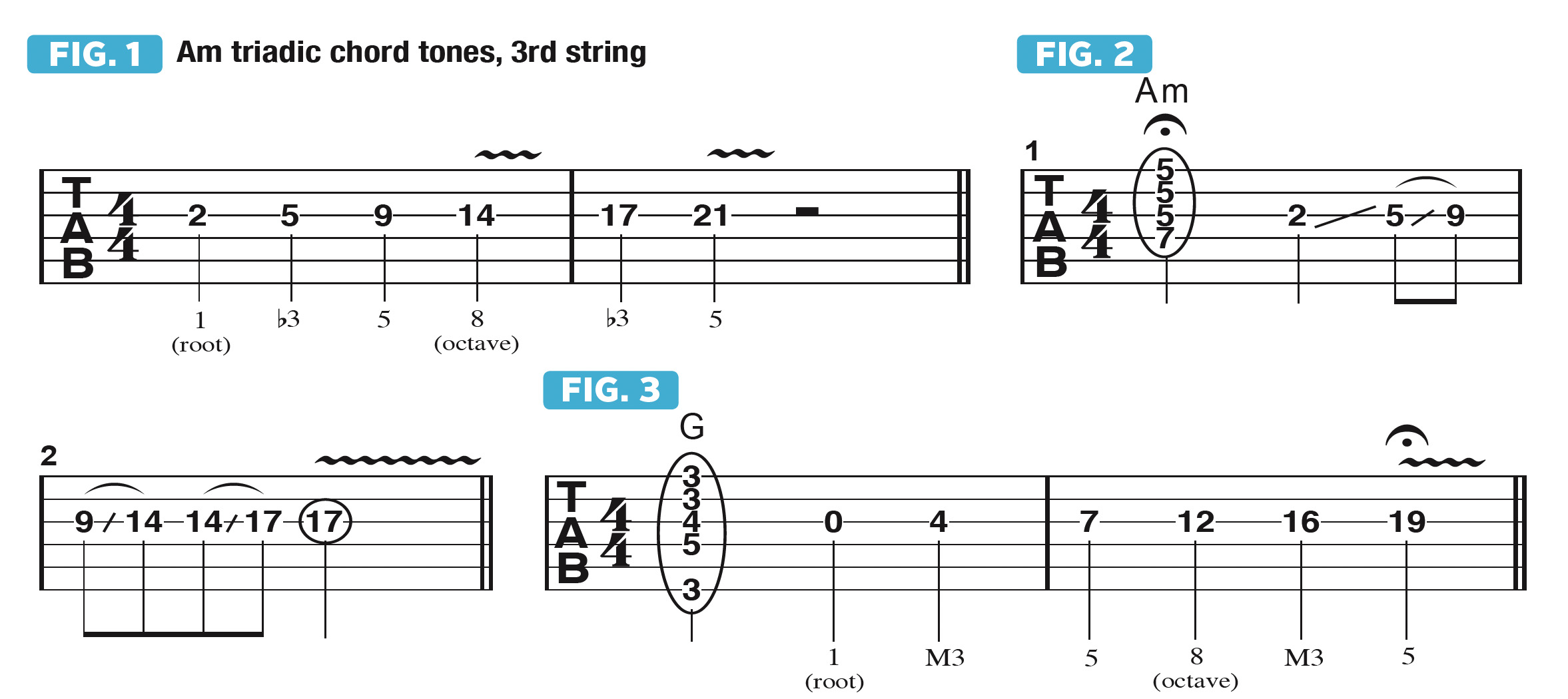
Figure 1 illustrates the triadic tones of Am: A (the root), C (the minor 3rd) and E (the 5th), played across two octaves as we move up the fretboard. In Figure 2, I play these notes within the framework of a rhythmic pattern of straight eighth notes. Figure 3 details the chord tones of the next chord in the progression, G.
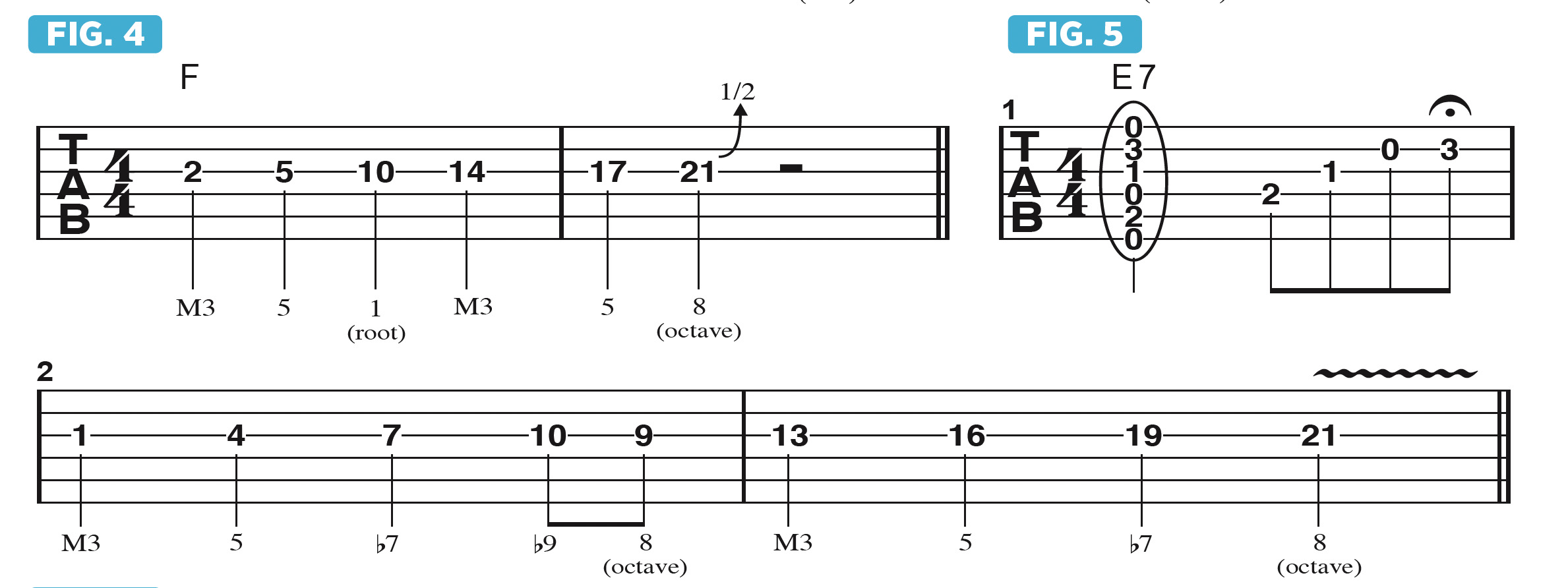
The notes of the 1-3-5 triad are G, B and D. Figure 4 illustrates the 1-3-5 for F – F, A, C – likewise expanded into a second octave. Here, we have to begin with the major third, A, as we are playing notes on the G string only.
Figure 5 addresses the last chord in the progression, E7. This chord offers a little more “information” that we can take advantage of in weaving melodic solos. The most significant aspect of E7 is that, as mentioned, it brings a G# into the picture, so it pulls the harmony away from A natural minor for a moment.
The b7th, D, sounds great too, as it serves to describe the dominant quality of E7, as compared to the straight triads presented for the other three chords. Let’s put all this information into action in an improvised melody.
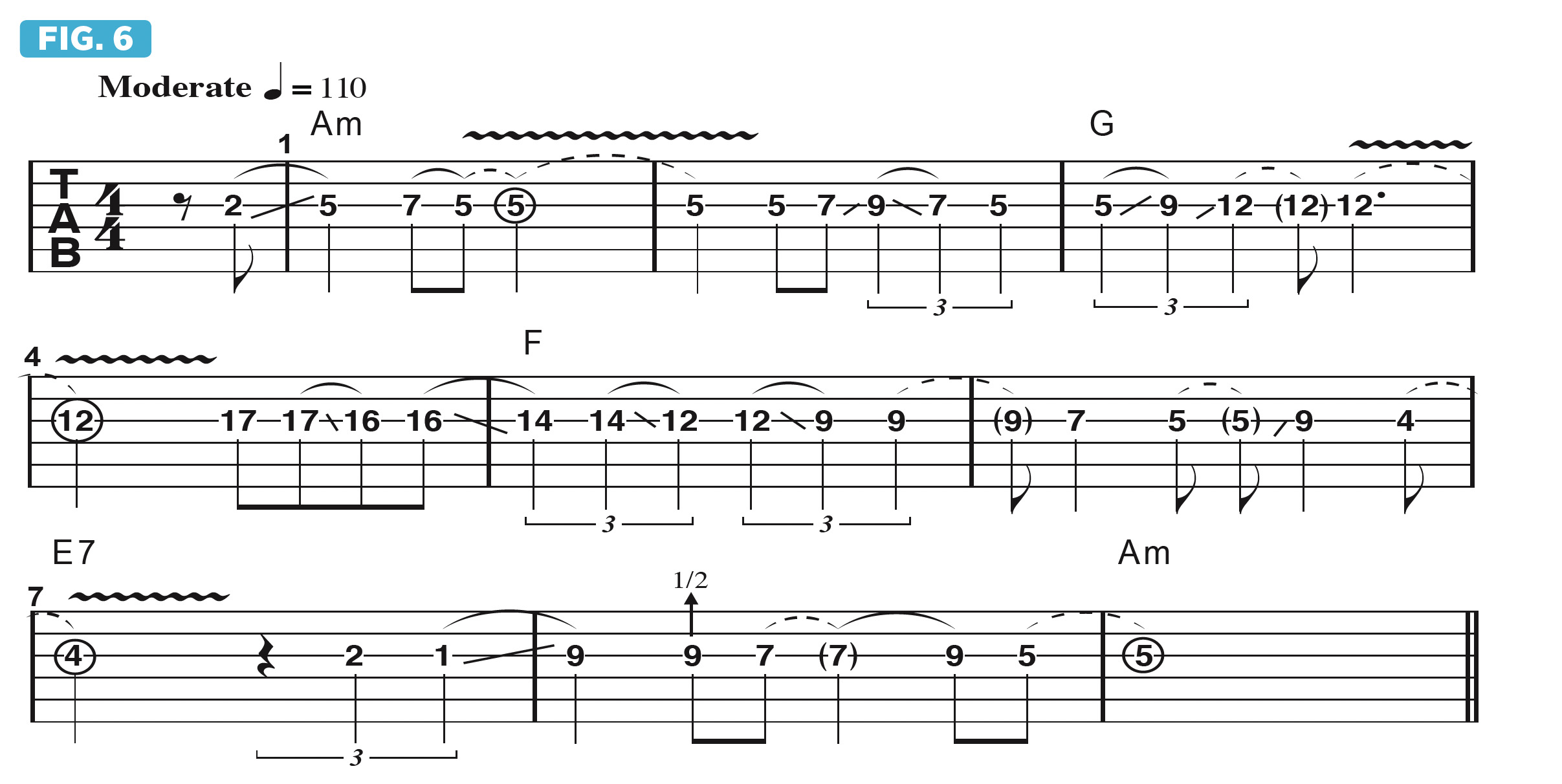
Figure 6 offers an eight-bar solo that’s built from the target note concept. As each new chord arrives in the progression, I target at least one of its triadic tones, so that my melody aligns with the inherent harmony in the chord progression itself.
When the E7 arrives, in bar 7, I also bring the b9 of E, an F note, into play, as it offers the feeling of harmonic resolution back to the chord tones of E7. Now try soloing over this progression yourself, keeping the chord tones in mind while aiming to craft melodies that are musically lyrical and pleasing.
Get The Pick Newsletter
All the latest guitar news, interviews, lessons, reviews, deals and more, direct to your inbox!
Andy Timmons is a world-renowned guitarist known for his work with the Andy Timmons Band, as well as Danger Danger and Simon Phillips.









![Joe Bonamassa [left] wears a deep blue suit and polka-dotted shirt and plays his green refin Strat; the late Irish blues legend Rory Gallagher [right] screams and inflicts some punishment on his heavily worn number one Stratocaster.](https://cdn.mos.cms.futurecdn.net/cw28h7UBcTVfTLs7p7eiLe.jpg)

